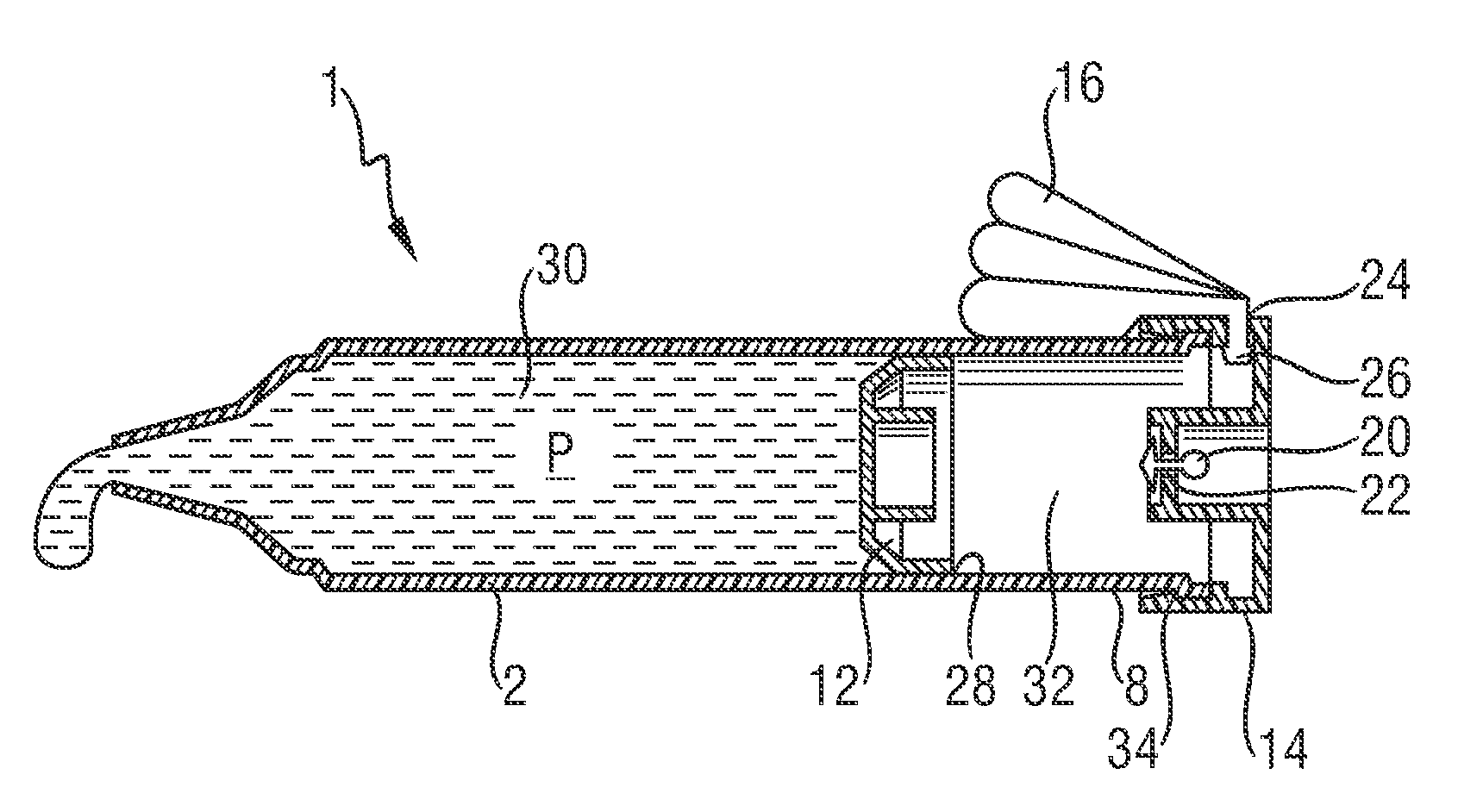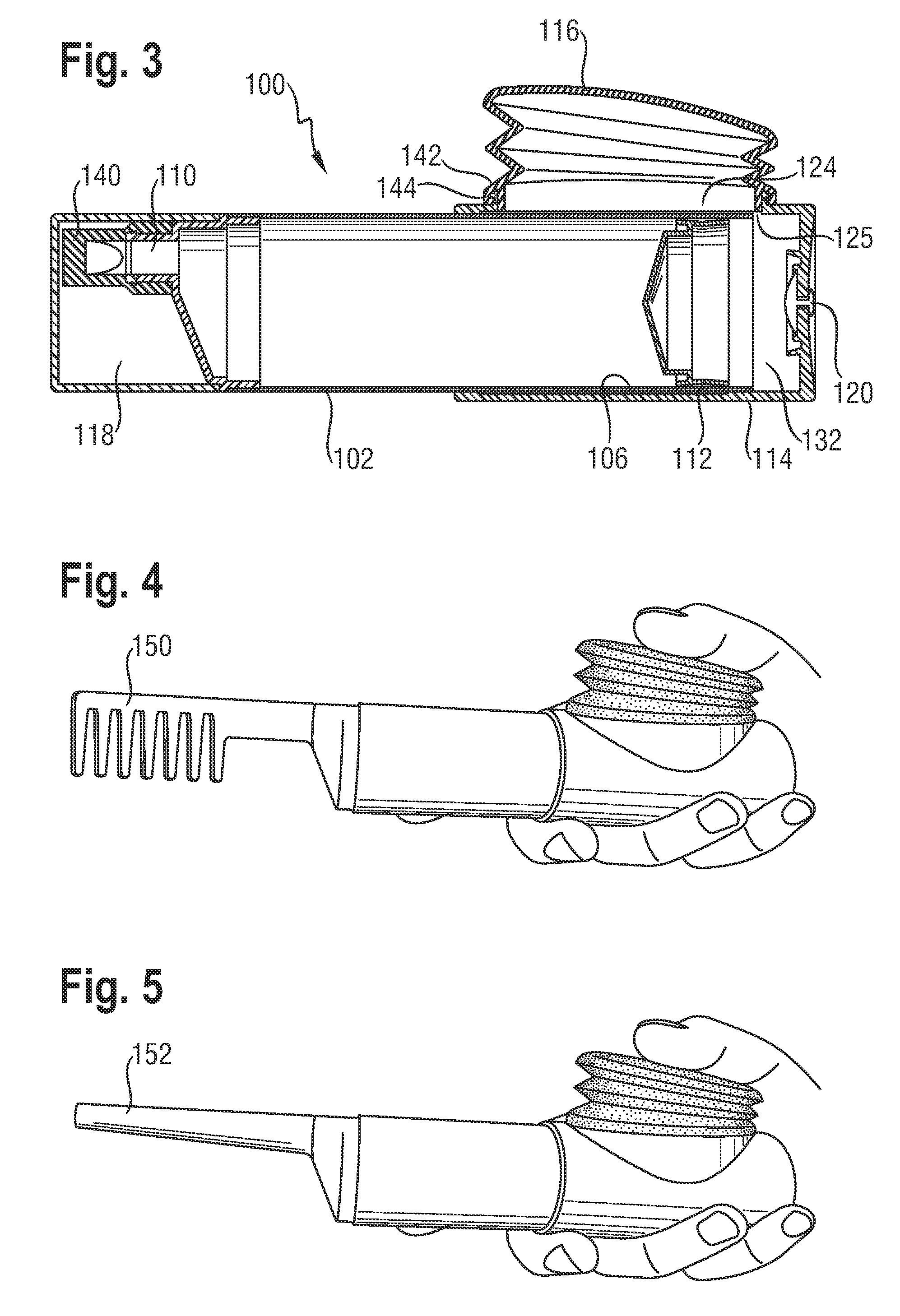Dispensing device for viscous materials
a dispenser and viscous material technology, applied in the direction of liquid transfer devices, single-unit apparatuses, instruments, etc., can solve the problems of user's hand coming into contact with the product, uncontrollable release, undesired consequences, etc., and achieve the effect of simple production
- Summary
- Abstract
- Description
- Claims
- Application Information
AI Technical Summary
Benefits of technology
Problems solved by technology
Method used
Image
Examples
first embodiment
[0037]The following is a description of certain embodiments of the invention, given by way of example only and with reference to the drawings. Referring to FIG. 1, there is shown a dispenser 1 according to the invention in exploded view. The dispenser 1 comprises a tubular housing 2, a piston 12, a bottom cap 14, a bellows 16, a cover 18 and a one-way valve element 20. The housing 2 has a generally elongate axis 4 with a distal end 6 and a proximal end 8. An outlet 10 from an interior of the housing 2 is located at the distal end 6. Bottom cap 14 is generally cup shaped and has a centrally located inlet channel 22 and an opening 24 in its lateral wall. Bellows 16 is formed by blow-molding and has an outlet duct 25 terminating in a nipple 26. Piston 12 has a peripheral seal 28.
[0038]FIG. 2 shows the dispenser 1 of FIG. 1 in longitudinal section in its assembled condition with cover 18 removed. The piston 12 is located within the housing 2 with the peripheral seal 28 forming a sliding...
second embodiment
[0041]A dispenser 100 according to the invention is shown in longitudinal cross-section in FIG. 3. Like elements to those of FIG. 1 are designated by the same numeral preceded by 100. According to FIG. 3, the dispenser 100 comprises a housing 102 in which slides piston 112. A bottom cap 114, bellows 116, cover 118 and a one-way valve element 120 are also provided. The dispenser 100 differs from the embodiment of FIG. 1 in that the bottom cap 114 is in the form of a sleeve that generally envelops the distal end 106 of the housing 102. Bottom cap 114 and housing 102 are connected by a bayonet connection (not shown). A further difference is the provision of an outlet check valve 140 extending from the outlet 110. The outlet check valve 140 is in the form of a soft duck-bill valve having a cracking pressure of 1 mbar. One example of such duck-bill valves is commercialized by Verna® Laboratories Inc. in fluorosilicon with the name VA3512. It is noted that the soft tip of the outlet check...
PUM
 Login to View More
Login to View More Abstract
Description
Claims
Application Information
 Login to View More
Login to View More - R&D
- Intellectual Property
- Life Sciences
- Materials
- Tech Scout
- Unparalleled Data Quality
- Higher Quality Content
- 60% Fewer Hallucinations
Browse by: Latest US Patents, China's latest patents, Technical Efficacy Thesaurus, Application Domain, Technology Topic, Popular Technical Reports.
© 2025 PatSnap. All rights reserved.Legal|Privacy policy|Modern Slavery Act Transparency Statement|Sitemap|About US| Contact US: help@patsnap.com



